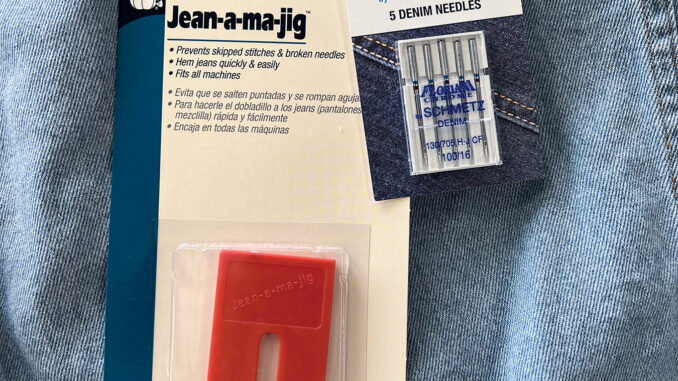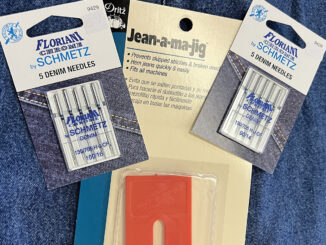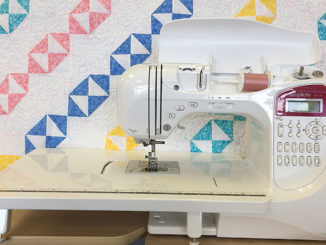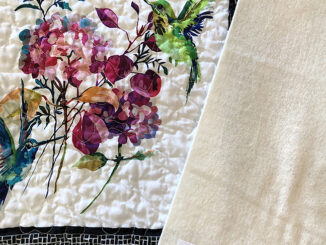
Denim continues to be a fashion staple today. Most of us have a favorite pair of jeans or a jacket that we couldn’t do without! Although we think of denim as an American fabric, it’s actually been around for many years. The term “denim” is of French origin, as our current fabric is derived from the earlier French twill cloth made from silk and wool. Denim is made from cotton, woven in a twill weave using one dyed thread and one white thread. During the Gold Rush of the 1800’s, Levi Strauss was commissioned by a gold mining company to make trousers from this fabric to sell to the miners. Strauss, and partner Davis, also patented the rivet used in the jeans to improve durability. The jeans that we know began to appear in the early 1900’s in the West and became the favored workwear of lumberjacks, cowboys, railroad workers, etc. It is believed that jeans were introduced to the eastern part of the country during the “dude ranch” craze of the 1930’s. Jeans rose to dominate the fashion scene beginning in the 1950’s after being featured in movies and worn by movie stars. The “hippies” of the 1960’s further cemented the mainstream popularity of denim. Designer jeans dominated the markets in the 1980’s and in the 1990’s, stretch was added to the fabric creating a sleeker fit.
Denim fabric is available in several weights for the home sewer. Less than 12 ounces is considered lightweight, 12-16 ounces is considered midweight (most jeans fall in these weights), and over 16 ounces is heavyweight. This fabric works well in a variety of patterns from children’s wear to home dec items. Here are some things to consider when sewing on denim:
Prewash: Always prewash your denim fabric. The all-cotton denims can shrink. Also, the indigo dye used can bleed so washing will help to minimize future bleeding. The washing will also help to remove sizing on the fabric and make it softer to handle. Depending on the quality of the denim, you may want to prewash a few times before beginning your project. You will also need to zigzag or serge the cut raw edges of the fabric to minimize raveling.
Machine Needle: Denim will dull your needle pretty quickly, so begin your project with a new one. For medium weight fabrics, use a size 14/90 needle; thicker denims will use a 16 or 18 needle. Some machine needle brands make a jeans needle specifically for sewing through denim. Also, you may need to adjust your stitch length; do a test sample first; generally 10-12 stitches per inch is the preferred measure.
Thread: Use a good quality polyester or cotton-polyester thread for your stitching. You can often find “jeans thread” in a gold color for decorative topstitching. An even feed foot or even a roller foot can sometimes make stitching a bit easier.
A good quality sewing machine will be needed to handle the thick denim fabric. If your machine “refuses” to move the fabric, don’t force it as you may throw the machine out of time leading to an expensive repair!
The Jean-a-ma-jig is a piece of plastic designed to fit under your machine foot to help you stitch over the “seam hump” when hemming or repairing jeans. This is available where sewing supplies are sold.
Seams and Seam Finishes: Most denim garments can be stitched with a standard 5/8” seam allowance. If your denim has stretch fibers, then select a stretch stitch for stitching. The seams do need finishing to prevent raveling. Pinking or zigzagging the seams is a simple way to finish, as is using the serger to finish the edges. One of the most popular seams for denim is the flat felled seam which features topstitching. This is a very durable seam that finishes the edges and is used on most manufactured jeans.
Denim fabric continues to be popular today and is even showing up in quilts! Using a good quality sewing machine and some of the above tips should ensure that your denim sewing experience is a good one!
-submitted by The Sewing & Vacuum Center





